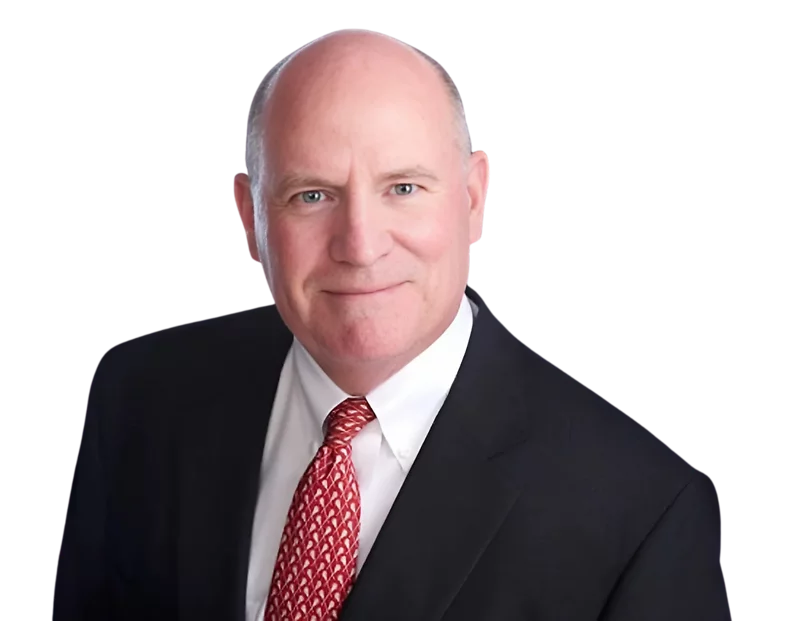Don't expect the EEOC to appeal.
In April 2024, the U.S. Equal Employment Opportunity Commission issued Enforcement Guidance on Harassment in the Workplace. The Enforcement Guidance addressed, among other things, harassment and discrimination based on gender identity.
Current Acting Chair Andrea Lucas, who was a Commissioner at the time, dissented from the gender identity portions of the Enforcement Guidance, saying that “[w]omen’s sex-based rights in the workplace are under attack.”
The State of Texas and the Heritage Foundation then sued the EEOC, seeking to block the gender identity portions of the Enforcement Guidance from taking effect. Both sides filed motions for summary judgment.
The plaintiffs argued, among other things, that the Enforcement Guidance went way beyond the scope of the 2020 ruling of the U.S. Supreme Court in Bostock v. Clayton County, in which the Court ruled that terminating an employee based on sexual orientation or gender identity violated Title VII. The Supreme Court’s majority opinion (written by Justice Neil Gorsuch) specifically said that the Court was not addressing gender identity issues such as shared locker rooms or bathrooms, or any other issues apart from discriminatory discharge.
To get around that, in the Texas lawsuit, the EEOC argued (among other things) that its Enforcement Guidance merely provided a “’survey’ of Title VII jurisprudence” and merely communicated the agency's “position” on these issues without issuing any employer mandates.
I’m sure.

Last week, Trump appointee Judge Matthew Kacsmaryk ruled in favor of the plaintiffs and vacated the portions of the Enforcement Guidance that addressed pronoun policies, sex-segregated facilities, and appearance. The rest of the Enforcement Guidance is still in place.
Given the current makeup of the EEOC, I will go out on a limb and predict that the likelihood of an appeal is zero.
Especially since the EEOC has now helpfully highlighted on its website the portions of the Enforcement Guidance that are no longer legally valid. (The EEOC cannot rescind the Enforcement Guidance because it doesn't have a quorum.)
In his decision, Judge Kacsmaryk noted that Title VII does not mention sexual orientation or gender identity.
If you’re like me, you might say, true, but the Supreme Court has ruled that discrimination on these bases is a form of “sex” discrimination, and sex discrimination is addressed in Title VII. But according to Judge Kacsmaryk, the Bostock majority
firmly refused to expand the [Title VII] definition of "sex" beyond the biological binary. . . . Beyond its misreading of Bostock, the Enforcement Guidance cites no binding authority for its metastasized definition of "sex." . . .
The judge also called B.S. on the EEOC’s claim that its Enforcement Guidance was not “final agency action” that was binding on employers. In the judge’s words, “The practical effect of the Enforcement Guidance is an unmistakable message to employers: it’s better to be safe than sorry.”
What’s more, the EEOC flat-out said in the Enforcement Guidance that “Bostock should be extended to bar ‘harassment’ based on gender identity.” According to Judge Kacsmaryk, this was an admission that the Enforcement Guidance “more than ‘summarizes’ Title VII case law. Instead, it fundamentally expands Title VII to include harassment based on gender identity.”
Any attorney who has represented employers during the last couple of years could hardly disagree with Judge Kacsmaryk that the EEOC during the Biden Administration treated this "mere summary" of Title VII as mandatory and binding on employers. Meaning that the EEOC was making real cause determinations, and requiring employers to pay real money, to revamp their policies, and to conduct mandatory training for employees and management.
What now?
You may be wondering what you, as an employer, should be doing now. The answer, in all likelihood, is “stay the course but relax a bit":
- If your harassment policy prohibits discrimination or harassment based on sexual orientation or gender identity, keep it in place. It’s still fine (and recommended) to prohibit bias or harassment based on these characteristics. And, depending on your location, you may still be required to do it under state or local law.
- Despite the fact that the EEOC’s guidance on pronouns has been vacated, continue being considerate and respectful of the pronoun preferences of transgender and nonbinary employees, and their preferred names. But if you (or your employees) slip up, or if the transgender or nonbinary person has not legally changed their name and you need to use the “dead name"* on tax forms, I-9s, and other legal documents, you won’t need to be overly concerned – at least, not from a federal law standpoint.
*”Dead-naming” is using a transgender person’s birth name rather than the current, preferred name.
- If you have a bathroom or locker room issue, confer with your employment counsel before you act. Employers are currently in a “damned-if-you-do, damned-if-you-don’t” situation. A 15-minute call with your attorney may save you sleepless nights, years of litigation, and legal fees.
- If you have, say, a transgender female employee who dresses like a woman, you can continue to allow that. But if you don’t want to allow it, confer with your employment counsel first. The companion case to Bostock involved a transgender woman who was hired before her transition to female. In other words, she was a biological male, and at the time of hire and for some time afterward was presenting as a male. During her transition, she began presenting at work as female, and she was fired. If I understand Judge Kacsmaryk correctly, he believes that this plaintiff was fired because she was a biological man dressing (and styling her hair and wearing makeup, etc.) like a woman. If the plaintiff had been a biological woman dressing the same way, then there would have been no problem. Therefore, when the plaintiff was fired, she was discriminated against because of her biological maleness, not because she was transgender. With all due respect to the judge, there seems to be a very, very, very fine line (if any) between discriminating against the plaintiff because she was a biological man dressing like a woman, versus discriminating against the plaintiff for being transgender. So do be careful and check with your employment law counsel before you prohibit a transgender employee from “presenting” based on his or her gender identity, and definitely before you discipline or discharge a transgender employee for this reason.
- As I’ve been recommending for some time now, be sure to consider making accommodations for employees who say that it violates their religious beliefs to address an XY person as a “she” or an XX person as a “he.” And, if you get such a request for accommodation, consult with your attorney before making any decisions that may come back to bite you.
In other news this week . . .
Another Trump-appointed federal judge in Louisiana has vacated the part of the EEOC's Pregnant Workers Fairness Act regulations that required employers to accommodate elective abortions. Don’t hold your breath waiting for the EEOC to appeal that one, either.

And the U.S. Supreme Court ruled yesterday afternoon that Gwynne Wilcox of the National Labor Relations Board will stay fired, for now. The great David Phippen will be back with more on this. And if you need to catch up, David's prior bulletins on the Wilcox termination are here, here, and here.
Finally, I wish you all a very happy Memorial Day weekend, and please do take a few minutes (as will I) to express your gratitude for all of those who have given their lives for our country.

- Of Counsel & Chief Legal Editor
Robin also conducts internal investigations and delivers training for HR professionals, managers, and employees on topics such as harassment prevention, disability accommodation, and leave management.
Robin is editor in chief ...
This is Constangy’s flagship law blog, founded in 2010 by Robin Shea, who is chief legal editor and a regular contributor. This nationally recognized blog also features posts from other Constangy attorneys in the areas of immigration, labor relations, and sports law, keeping HR professionals and employers informed about the latest legal trends.





































